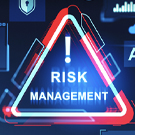Insights
 Seven Emerging Threats to Businesses
Seven Emerging Threats to Businesses
September 1, 2024
The twenty-first century is reshaping the way businesses, governments, and communities approach sustainability, regulatory compliance, and risk management. Understanding and addressing these emerging risks is crucial for ensuring long-term resilience and success in an increasingly unpredictable world.
Key Threats in Today’s Business Environment
In any industry, liabilities constantly threaten the financial and reputational stability of businesses. While many of these liabilities can be mitigated, emerging threats caused by changing environmental conditions, regulatory considerations, and activism can be harder to manage.
Here are seven key threats:
- Climate Change and Extreme Weather Events: With the increasing frequency of extreme weather events, businesses face higher risks of environmental damage and associated liabilities. This includes everything from flooding and wildfires to hurricanes and severe storms. The unpredictability of these events makes risk management more challenging.
- Regulatory Changes and Compliance Risks: Environmental regulations are constantly evolving, especially in response to climate change. Companies need to stay updated with international, federal, and local regulations to avoid penalties and ensure compliance. The risk of non-compliance is significant, especially as governments tighten regulations around carbon emissions, waste disposal, and resource usage.
- Pollution and Contamination: Emerging pollutants such as microplastics, PFAS (per- and polyfluoroalkyl substances), and other chemicals are gaining attention due to their persistence in the environment and potential health impacts. Managing contamination risks and associated cleanup costs is becoming increasingly important for businesses, especially those in manufacturing, agriculture, and waste management.
- Biodiversity Loss and Ecosystem Disruption: Companies operating in or near sensitive ecosystems face the risk of contributing to biodiversity loss. The destruction of natural habitats, whether through deforestation, industrial activity, or urban development, can result in significant reputational damage and legal liabilities.
- Supply Chain Disruptions: The environmental sector is increasingly impacted by supply chain issues, particularly when natural resources are involved. Resource scarcity, caused by over-exploitation or environmental degradation, can disrupt supply chains and lead to increased costs and reputational damage.
- Technological Risks and Cybersecurity: As environmental monitoring and management increasingly rely on digital technologies, the risk of cyber-attacks and data breaches grows. Companies must protect sensitive environmental data and ensure the integrity of systems controlling critical infrastructure.
- Public Perception and Activism: With growing awareness of environmental issues, companies face risks from public scrutiny and activism. Social media campaigns and activist movements can quickly escalate, leading to reputational damage and financial losses. Companies need to be proactive in managing their environmental impact and engaging with stakeholders transparently.
To maintain stability, businesses must establish best practices for risk management, including the protections afforded by environmental liability insurance. With these plans in place, businesses become more resilient and able to protect against risks now and into the future.
Risk Management Strategies
Risk mitigation strategies for environmental issues are critical for ensuring operational stability, regulatory compliance, and long-term sustainability. Here are several key risk management strategies:
- Diversification of Energy Sources: Reducing dependency on a single energy source can minimize risks associated with supply disruptions, price volatility, and regulatory changes. Incorporating renewable energy sources, such as solar and wind, into the energy mix can also help mitigate environmental risks and align with sustainability goals.
- Regulatory Compliance and Monitoring: Staying ahead of regulatory changes is essential. Implementing robust compliance programs, regular audits, and continuous monitoring ensures that operations meet local, national, and international regulations. This helps avoid legal penalties and reputational damage.
- Investment in Technology and Innovation: Adopting advanced technologies such as smart grids, AI-driven predictive maintenance, and automation can enhance operational efficiency and reduce the risk of equipment failure. Technology can also protect against emerging cybercrime threats, helping to protect proprietary business and client information from loss. Investing in innovation also enables the energy sector to adapt to changing market conditions and emerging risks.
- Environmental Impact Assessments: Conducting thorough environmental impact assessments (EIAs) before launching new projects helps identify potential risks and develop strategies to mitigate environmental harm. Regular environmental monitoring and reporting can further ensure compliance with environmental standards.
- Crisis Management and Emergency Response Planning: Developing comprehensive crisis management and emergency response plans is vital for minimizing the impact of incidents such as oil spills, equipment failures, or natural disasters. Regular drills and training ensure that employees are prepared to respond effectively to emergencies.
These strategies collectively help energy companies navigate the complex risk landscape, ensuring they can operate effectively while minimizing potential liabilities and disruptions. Coupled with comprehensive liability insurance solutions, risk management practices such as those described above help protect businesses from common and unexpected liabilities. ◼

